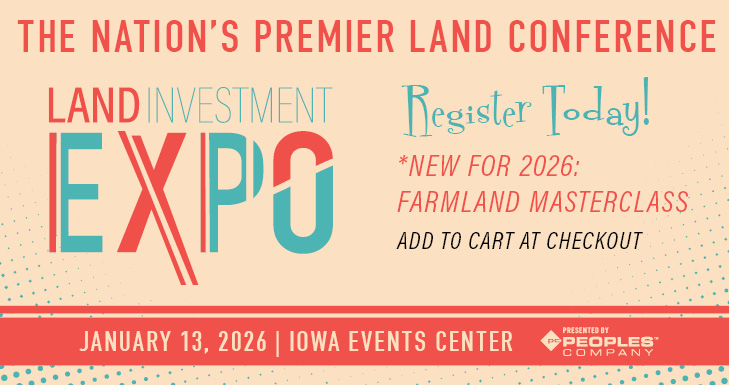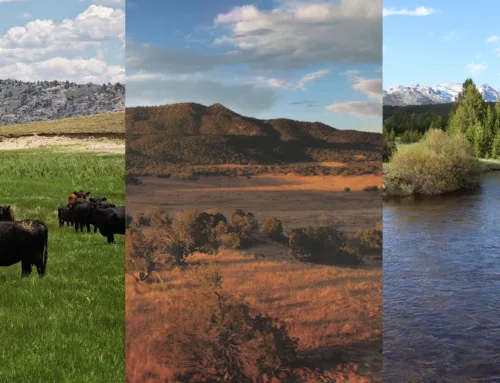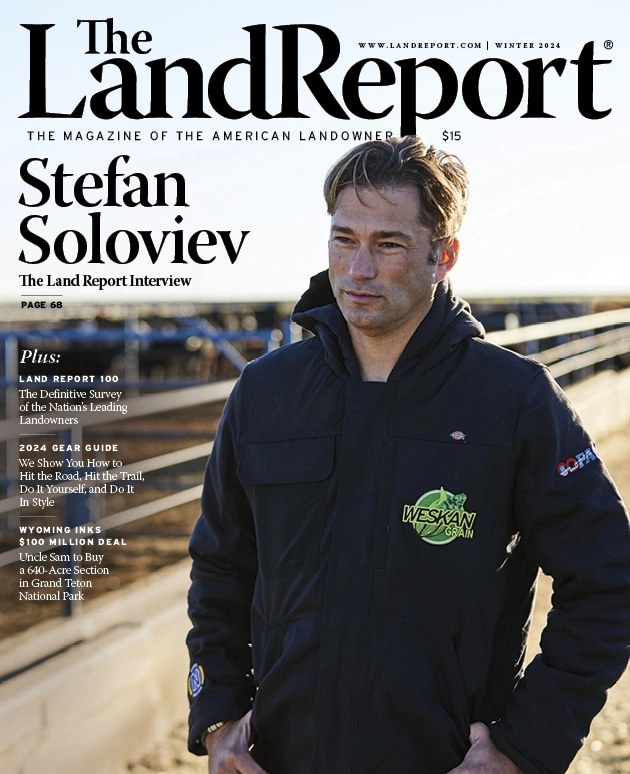Barbarians at the Lake
Barbarians at the Lake
By Eric O'Keefe
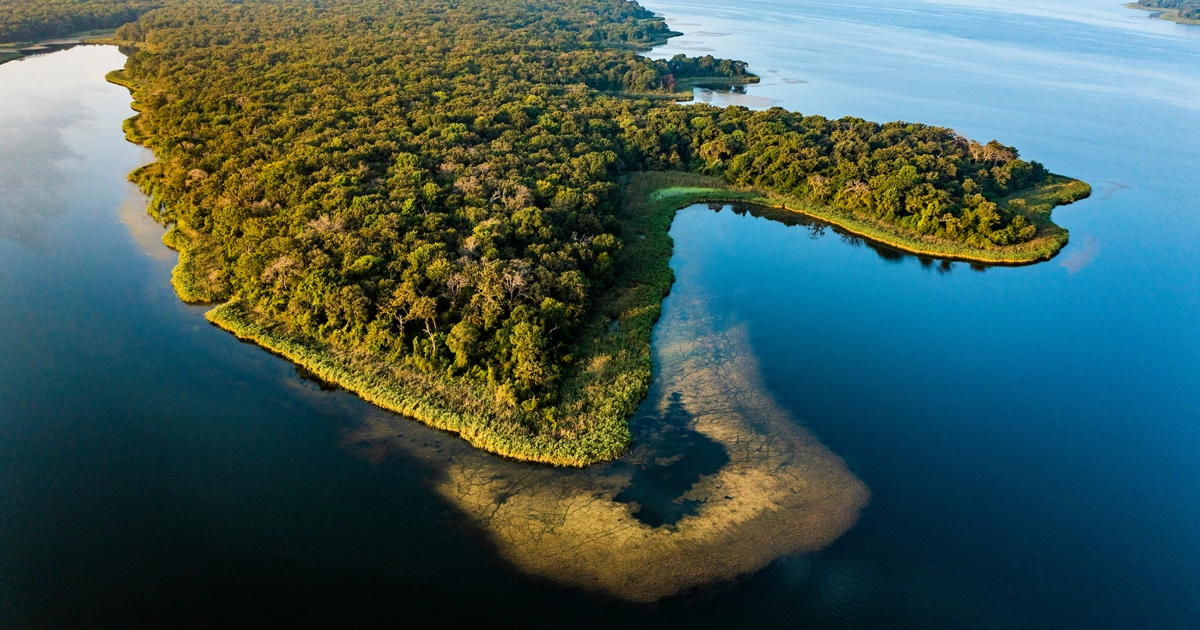
LR_BarbarianLake-01
THE LESSON OF THE LARGEST CONDEMNATION AWARD IN TEXAS HISTORY?
Don’t mess with Texans’ private-property rights.
“You can buy your own lake and more than 5,000 acres for sale south of Dallas.”
Steve Brown’s banner headline trumpeted the $110 million listing of Fairfield Lake in the Dallas Morning News on October 5, 2021. The paper’s longtime real estate editor adopted a cheeky tone as he described the one-of-a-kind opportunity. “Hunting for a place to get away for the weekend? How about buying your own lake?” he teased. Much of the article centered on the property’s long list of over-the-top attributes:
Listing Features
- More than 5,000 acres
- A 2,400-acre lake
- 21 miles of shoreline
- Lush hardwood forest
- 8 miles of roads and bridges
- $22,000 per acre
- $110.55 million asking price
Brown left it to longtime Dallas broker Blake Hortenstine to sing the property’s praises. “A water asset of this magnitude is virtually impossible to find anywhere in the lower 48 states, and combined with the land-development possibilities and amenities, it is the only offering of its kind,” said the brokerage’s founder and namesake.
Brown noted that “part of the land for sale has been leased to the state of Texas for a park since the 1970s,” but he offered no further elaboration in his copy.
Hortenstine Ranch Company’s marketing materials spelled out the specifics. “If the park lease is canceled by the new owner, TPWD has the right to remove any improvements inside the park within 90 days of the cancellation.”
That right of the landowner — Vistra Energy — to terminate the lease with Texas Parks & Wildlife Department (TPWD) had been a standard clause in all leases since the first agreement in 1971. It had remained in all subsequent lease renewals, including the most recent one-year extension. No matter the landowner, TPWD was desperate to keep the marquee state park open. Why? Simply put, the price was right.
Sweetheart Deal
You won’t find the term sweetheart deal in any real estate handbook. Unlike fire sale or short sale, it isn’t tied to a calamity or some sort of setback that hobbles a seller. Think of a sweetheart deal more like the total solar eclipse that recently mesmerized millions of Americans: It just happens. And then it’s gone.
That was the case in 1971 when a picture-perfect sweetheart deal was gift-wrapped and presented to TPWD. Known as Fairfield Lake, the Freestone County landmark features one of the largest privately owned lakes in Texas, if not the nation.
The reservoir was constructed as a cooling pond for Big Brown, a coal-fired power plant owned and operated by Texas Power & Light Company. But the power company didn’t require all 2,400 acres of Fairfield Lake to cool Big Brown’s generators. And that’s how this particular sweetheart deal took shape. There was no master plan. It just happened.
Power-generation companies exist in a highly regulated political matrix. Those with a mining component are even more closely scrutinized. Big Brown was fired by lignite coal from the Turlington Mine just down the road from the lake. In other words, Big Brown was subject to a litany of regulators, including the Public Utility Commission of Texas.
Like oil companies and the IRS, power companies need all the positive press they can get. Fairfield Lake State Park would be all that and more. What better way to win friends and influence officials at the Capitol than to offer some surplus land at the far end of an empty lake for use as a state park? It wouldn’t cost a dime, and the potential upside was … full of potential.
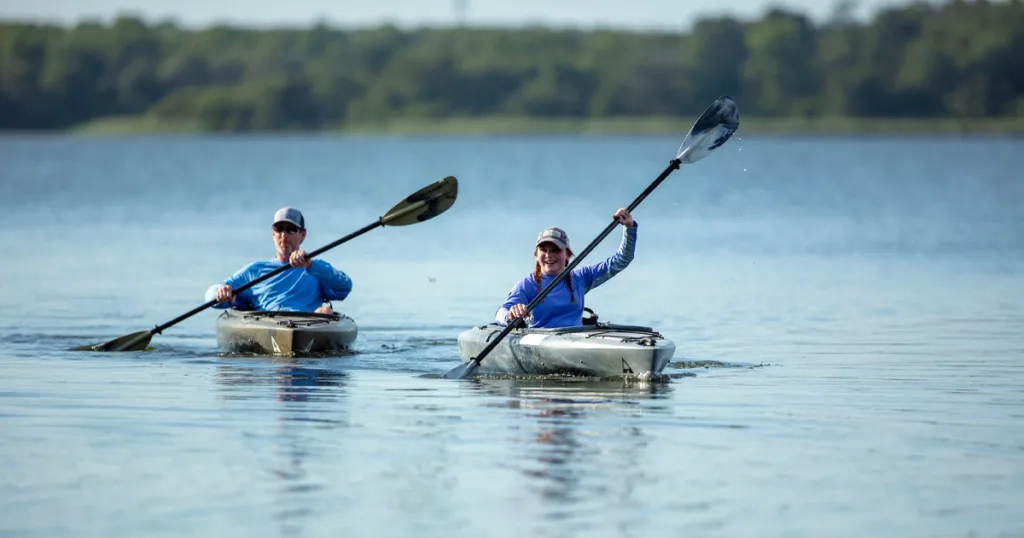
FAIRFIELD LAKE STATE PARK. Beginning in 1971, the Texas Parks & Wildlife Department had a dollar-a-year cancellable lease.
In 1971, the paperwork was signed. The dollar-a-year fee that Texas Power & Light Company charged the chronically cash-strapped state agency was more than just a sweetheart deal. It was a perfect fit budgetwise.
Texas state parks have long endured chronic underfunding. During his gubernatorial tenure, the late great John Connally described the state park system as “sick to the point of dying.” In 1963, Big John single-handedly salvaged the State Parks Board when he merged it with the older, more established Game and Fish Commission to create Texas Parks & Wildlife Department.
A decade later, this new agency was building roads, installing boat ramps, and putting in campgrounds at Fairfield Lake State Park, which opened in 1976. Thanks to Big Brown, the fishing was phenomenal. Tropical species such as blue tilapia thrived in the warmer water, as did native species such as redfish, catfish, and largemouth bass.
This corporate largesse continued until 2017 when a successor to Texas Power & Light, Vistra Energy, announced it was shuttering Big Brown. The following year, the Energy Reliability Council of Texas signed off on the plant’s closure. With that decision, the death knell for TPWD’s sweetheart deal had begun to peal. And TPWD’s leadership knew it. Overtures were made to buy the parkland, but Vistra had zero interest in a carve-out. It was all or nothing, and the underfunded agency definitely could not afford to buy all 5,000 acres.
“It would be our hope that we could continue to see that lease extended with the new buyer of that property so that the state park did not go away. But ultimately, we’re going to be at the mercy of the new owner,” warned TPWD Executive Director Carter Smith in 2019.
At the time, Smith was testifying before Senator Charles Schwertner, whose district included Fairfield Lake. Smith’s matter-of-fact tone conveyed his understanding of the lease extension that he himself had signed. Christopher Collins, writing for the Texas Observer, noted the potential demise of the popular park: “Texas State Park Could Close as Vistra Energy Seeks to Sell Land Near Shuttered Power Plant.”
A Cup Of Coffee and the Dallas Morning News
None of these details were even the slightest consideration to Shawn Todd as he sipped his coffee and paged through the paper that same October morning. The Dallas-based real estate investor saw Steve Brown’s story about the $110 million listing and chuckled to himself.
At that very moment, Todd Interests was acquiring the former headquarters of TXU. Like Vistra, it too was a corporate successor of Texas Power & Light. Designed by I.M. Pei, the 46-story high rise stood directly across the street from Shawn’s own office. More importantly, it had sat empty for almost a decade.
And Shawn knew why.
It was this caliber of insight that enabled Todd Interests to capitalize on market discrepancies that other investors failed to identify. The firm didn’t just look at what was for sale; it studied why it was for sale. Then it devised higher-yielding opportunities. Todd Interests described this approach as “adaptive reuse,” and it enabled the company to generate above-market returns since launching in 1990.
The empty I.M. Pei high-rise? The fact that it was the old TXU headquarters was just the tip of the iceberg. What mattered more was that in 2007, TXU had been acquired in the mother of all leveraged buyouts (LBOs). The $31 billion deal eclipsed the previous titleholder, the $25 billion takeover of RJR Nabisco that inspired the book Barbarians at the Gate by Bryan Burrough and John Helyar.
TXU’s record-setting LBO famously flamed out in 2014. The Financial Times reported that the moment the company sought Chapter 11 bankruptcy protection, $8 billion in equity vaporized. In due course, assets such as TXU’s headquarters were vacated, tagged, and sold off by their owners. The same thing would happen to Fairfield Lake.
Countless constituencies would be drawn to buying or preserving Fairfield Lake State Park. Some championed the need for more public parks and greater outdoor access. Others singled out economic development and the importance of greater rural employment.
But all of these laudable motivations were trumped by a single overriding factor that only the Dallas real estate developer who had bought I.M. Pei’s high-rise recognized: Vistra Energy was the remnant of one of the bloodiest bankruptcies in US financial history. The Wall Street Journal listed the $40.9 billion wreckage of Energy Future Holdings somewhere south of Enron’s 2001 implosion and $1 billion more than Chrysler’s 2014 meltdown.
The days of dollar-a-year leases at Fairfield State Park were numbered. Not only did Vistra Energy CEO Jim Burke need to hit profit projections, but his predecessors had saddled him with billions of dollars of debt to pay down.
Thanks to this uncanny insight, Shawn had a completely different take on Steve Brown’s breaking news story in the Dallas Morning News. All that remained was to see if Fairfield Lake was truly the one-of-a-kind property that the journalist claimed it was.

Let’s Get This Property under Contract ASAP
It didn’t take long for Shawn and his two partners — his sons, Patrick and Philip — to recognize why this one-of-a-kind property had welcomed thousands of visitors since it opened in 1976.
“We couldn’t believe it,” Shawn says. “The clear blue water. The scallopy edges of the lake. Not only the size and the scale but the appropriate size and scale. The lake is large but not enormous.”
“Savannah post oak trees line the entire property,” says Patrick. “The rolling hills are just covered in them.”
“We didn’t know exactly what the plan was going to be when we drove down and arrived at the park that morning, but once we toured it, we all agreed, ‘We need to get this under contract as soon as possible,’ ” says Philip.
That was easier said than done.
“Fairfield Lake was not our typical deal. There was very little information available on it because it was being sold by the successor to one of the largest bankruptcies in the United States. There wasn’t a lot for us to dig into,” Shawn says.
More than six months elapsed between the time Fairfield Lake came to market and Todd Interests got it under contract on April 21, 2022.
“We intentionally negotiated a long due-diligence period. And we paid for that right — several hundred thousand dollars released day one to the seller with no contingency. We were putting a lot of poker chips at risk to say we were in the game,” Shawn says.
But the challenging due-diligence phase also revealed several unforeseen opportunities. The principal one was the setting — bucolic Freestone County.
“We build large properties in major urban centers, cities such as Dallas and Houston. In Freestone County, you don’t have the encumbrances that you do in a large municipality. You don’t need a zoning lawyer in Freestone County. You don’t need a consultant to help you understand the building code,” Shawn says.
On the downside, no maintenance had been done in decades. In anticipation of a 2023 closing, Todd Interests spent more than a half-million dollars clearing out brush. The more they cleared, the more they liked what they saw.
“As we started clearing, we could see these majestic Savannah post oaks. We could see the beautiful white post oak trees. You could see the undulation of the land. You saw the shoreline. You saw the bald eagles. You saw all the ducks. You saw all the deer. It was almost like this sanctuary meets a menagerie of nature,” Shawn says.
Several months after getting the property under contract, Shawn got a call from Matt Goering, the senior vice president at Vistra Energy, who had been his point person during the Fairfield Lake negotiations. Goering had a minor request. Would the Todds mind taking a meeting with the executive director of TPWD and the chairman of the Texas Parks and Wildlife Commission?
“I remember wondering to myself, ‘How can this go well for us?’ ” Shawn says. “But it’s easy to give favors. So we said that we’d gladly take the meeting.”
The executive director, Carter Smith, was at the apex of a distinguished career championing the great outdoors. Prior to leading TPWD’s 13 divisions and 3,300 employees, he had spent a decade as Texas state director of The Nature Conservancy. Smith had already announced that he was stepping down as executive director in January 2023, and the search for his replacement was underway.
Arch “Beaver” Aplin III was the spark plug behind Buc-ee’s. From a single location in Lake Jackson, he had created a national brand that boasted the nation’s cleanest restrooms and the world’s largest convenience store, a 74,407-square-foot behemoth in Tennessee. Appointed to the commission in 2018, he was named chairman in 2021.
The October 4 meeting in Dallas at Todd Interests was a cordial one. “Beaver didn’t hesitate to share how incredibly embarrassing it would be for Parks and Wildlife to lose a cherished property like Fairfield Lake during the 100th anniversary of the park system. I remember that when Beaver shared that, he immediately said that he was 100 percent for our business transaction and for private-property rights. But Beaver did add that if there were any possible way we could keep some portion of the state lease intact, he’d like to try to move toward that endeavor,” Shawn says.
Ultimately, Todd Interests declined to continue the lease. “We couldn’t pay more than $100 million for this property and keep any aspect of a park in place,” Shawn says. The decision was relayed to Smith and Aplin, both of whom responded with polite thank-yous.
At that point, Shawn was under the impression that he had not only complied with Vistra’s request to meet with the state officials but that the matter of the state park lease was off the table.
“The lease going away was never on our watch,” Shawn says. Technically, the Dallas developer was right. But in the court of public opinion, he was about to become Public Enemy No. 1.
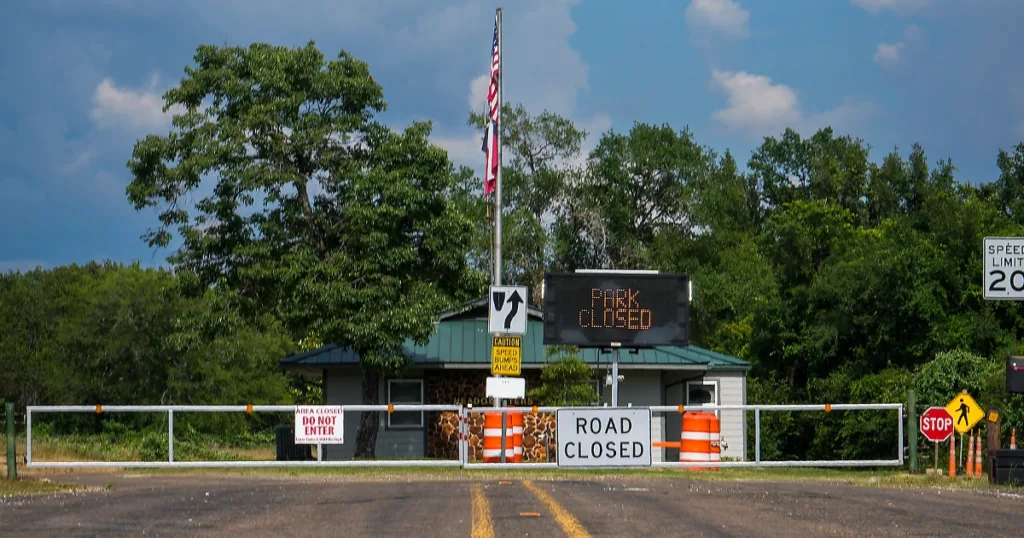
Smiley N. Pool © The Dallas Morning News
The Disinformation Campaign
Carter Smith’s timing was flawless. The official notice of termination of the Fairfield Lake State Park lease from Vistra arrived on February 13, 2023, two weeks after he stepped down. Navigating the treacherous waters swirling around Fairfield Lake was now David Yoskowitz’s lot.
The disappointing news crushed the park’s thousands of loyal visitors. “We’ve come to say goodbye,” Dawn Hayes told Emily Foxhall in an interview for the Texas Tribune. Like so many others, Hayes and her husband considered Fairfield Lake one of the best parks they had ever visited.
Although Todd Interests did not own Fairfield Lake, let alone cancel the lease, Shawn became the scapegoat for a vocal group of elected officials, appointees, conservation groups, cultural organizations, business owners, and legions of outdoor enthusiasts upset at this disappointing loss of a treasure. In the months following the closure, the mudslinging went off the charts. The charges leveled at the Dallas real estate developer included the willful desecration of the graves of enslaved and freed men, draining Fairfield Lake to the detriment of downstream property owners, endangering the health of Texans via Fairfield Lake’s tainted water supply, and jeopardizing Texas’s natural resources by partnering with nonexistent Chinese backers.
One of the more astonishing fictions was the need to recoup the “loss” of some $72 million spent on improvements that had been put in place by TPWD during the 50-year leasehold. This deceit, the lost investment of taxpayer funds, became a preferred red herring, one continually trotted out to justify the acquisition of Fairfield Lake State Park by any means despite the fact that every lease stipulated that all improvements not removed by TPWD belonged to the landowner.
A complete accounting of these expenses has never been provided, and no public official ever asked why TPWD invested such a massive sum in a lease widely known to be cancellable.
My own cursory inspection of the park revealed only one improvement of any significant value: 8-plus miles of two-lane roads. Ballparking a replacement cost of $1 million per mile totals $8 million. Beyond that, other improvements included decades-old ranger residences, an aging fishing pier, boat ramps and docks, fish-cleaning stations, RV campsites, primitive campsites, picnic sites, fire pits, and the like. Were they worth $10 million total? A generous offer to say the least. $20 million? A pipe dream. $72 million? Bernie Madoff numbers.

The 88th Texas Legislature
Yet recouping this phantom $72 million investment became a key tenet of bills filed in the Texas House by Angelia Orr and in the Texas Senate by Charles Schwertner. Fairfield Lake was located in their respective districts, and both intended to use the power of eminent domain “to preserve Fairfield Lake State Park.”
Neither Orr’s H.B. 2332 nor Schwertner’s S.B. 1656 got enough traction to even make it out of committee. Both died because Texans loathe government takings, especially those that impinge on private-property rights.
Texans’ disdain for “the despotic power” — as early jurists called eminent domain— reached full bloom following Kelo v. City of New London. In this infamous 2005 case, the Supreme Court ruled that tax-hungry governments possessed the ability to take middle- and working-class neighborhoods and give them to private developers to increase tax revenue and jobs.
In her stirring dissent, Justice Sandra Day O’Connor, who hailed from an Arizona ranching family, wrote, “The specter of condemnation hangs over all property. Nothing is to prevent the State from replacing any Motel 6 with a Ritz-Carlton, any home with a shopping mall, or any farm with a factory.”
In response to Kelo, 42 states passed laws limiting eminent domain, including the Texas Legislature. In 2007, it passed the Landowner’s Bill of Rights.
This institutional mindset was on full display May 3 during public testimony before the Senate Committee on Water, Agriculture & Rural Affairs. Shawn; his legal counsel, Ed McCarthy; and Alex Ortiz of the Sierra Club had already given their testimony.
That’s when Senator Nathan Johnson admitted that he frequently sided with the Sierra Club, which supported the proposed legislation. But not this time.
“It’s odd … I actually frequently vote ‘No’ on things in trying to defend the environment, and here I am defending private-property rights. I want the otters and the nutria to have a place to go, but I think that maybe government imposing upon private-property rights is the wrong way for us to go about preserving the environment,” the senator said.
By the end of the regular session, neither the Texas House nor the Texas Senate saw fit to use eminent domain to seize private property being conveyed by a willing seller to a willing buyer.
To Take All Necessary Steps
Yet Beaver Aplin forged ahead. Although TPWD had just $7 million to spend on park acquisitions, he had lobbed numerous proposals into both Todd Interests and Vistra Energy. One had Todd Interests simply walking away from its transaction “for altruistic reasons.” A photo opportunity with the governor was offered in return. Another one had Vistra Energy voiding its $103 million contract and instead accepting $60 million for the park. Neither company took the bait. Aplin was not deterred.
By the close of the regular session, TPWD had enjoyed its most lucrative session ever. The agency received two record-setting tranches of funds to acquire new state parks from willing sellers. The first was the billion-dollar Centennial Parks Conservation Fund. The second one included $125 million. Although the verbiage was vague — “to acquire real property for use as state parks” — the intent was crystal clear: to purchase Fairfield Lake State Park.
Coffers flush, Aplin dispatched a $95 million offer to Vistra Energy CEO Jim Burke on June 1.
“At its May 25, 2023, meeting, the Texas Parks and Wildlife Commission authorized the Texas Parks and Wildlife Department (TPWD) Executive Director to take all necessary steps to acquire the approximately 5,000 acres to preserve and expand Fairfield Lake State Park,” Aplin wrote.
Gone was the personal pledge that Aplin made to respect Todd Interests’s private-property rights on October 4. Forgotten was his own testimony before the House Appropriations Committee on February 27 when he told Steve Toth, a staunch private-property-rights advocate, that he would “follow my orders and do what’s told by the legislature.”
One can only imagine the sigh of relief that Jim Burke enjoyed as he perused Beaver Aplin’s $95 million offer. For the umpteenth time since Big Brown had been decommissioned, TPWD lowballed the power company. Only this time, the fallout would not be Burke’s problem. It would be Shawn’s.
On the very day Beaver Aplin’s $95 million offer arrived at Vistra Energy headquarters, Todd Interests closed the deal. Fairfield Lake was off the table. Purchasing the property was no longer an option for TPWD.
Stealing the Deal
The day after Fairfield Lake sold, the Texas Parks and Wildlife Commission scheduled a special meeting for June 10 to consider acquiring not just the former parkland but all 5,025 acres acquired by Todd Interests. The news came as no surprise to the property’s new owner. A letter addressed to Shawn had already arrived encouraging him to accept TPWD’s “robust offer to acquire the interests of Todd Interests in purchasing the Property.”
The letterhead read “Office of Texas Attorney General Ken Paxton,” and it was dated May 25. Of the many moments that gave Shawn pause, the attorney general’s “encouragement” to accept the state’s offer stands out distinctly because on that same day, the House General Investigating Committee unanimously recommended that Ken Paxton be impeached. Two days later, Texas’s 51st attorney general became the first statewide officeholder to be impeached since Governor James “Pa” Ferguson in 1917.
And the activity that Shawn had been involved in that warranted the attention of the state’s top law enforcement officer? The lawful purchase from a willing seller of real property that had been marketed nationwide. More specifically, it was the lawful purchase of real property that TPWD had long leased for a pittance but now coveted for its own.
It was about this time that Shawn had an epiphany. At home late one evening, he told his wife, Cheryl, “They’re trying to steal our property.”
Over the preceding three decades, the 60-year-old had built a resilient enterprise that had survived the savings and loan crisis, the Great Recession, and countless other bumps in the road that derailed countless other developers. Shawn considered himself blessed to be based in Texas, a state where entrepreneurs and investors thrived because of the pro-business regulatory environment.
Only now he found himself in a cage fight against an unelected state official whose political ties were bolstered by more than $2 million in campaign contributions to Governor Greg Abbott and Lt. Governor Dan Patrick, according to Transparency USA.
This became patently clear at the special meeting of the Texas Parks and Wildlife Commission on June 10. Every commissioner present — a group that included some of the state’s most successful entrepreneurs — voted to file a petition for condemnation to acquire Fairfield Lake.
Then, in a bizarre postscript, the very same political appointees who had unanimously voted to wield the state’s power to seize private property “instructed TPWD Executive Director David Yoskowitz, Ph.D. to prepare a commission policy restricting the agency’s use of eminent domain to extraordinary and unusual situations.”
Shawn was not the least bit surprised by this announcement. After three decades in the trenches, the Dallas developer knew what lay ahead.
The Court of Public Opinion
On July 6, the Dallas Morning News ran an opinion piece by Beaver Aplin titled “Here’s Why Eminent Domain is the Appropriate Way to Save Fairfield Lake State Park.”
Aplin’s timing couldn’t have been better — for Shawn. That same day, he was taking his case to the people of Freestone County. A considerable crowd had gathered before the courthouse steps in downtown Fairfield for the open-air press conference. Some of his strongest points were lifted word for word from Aplin’s opinion piece.
Aplin wrote, “After many months of difficult negotiations and as a last-resort action, TPWD and its commissioners made the decision to authorize condemnation of the land through eminent domain to save a treasured state park that’s enjoyed by more than 80,000 Texans every year.”
Shawn challenged this point. “We’ve never received a bona fide offer of any kind from Beaver Aplin and from Texas Parks and Wildlife regarding the existing parkland of 1,800 acres that they lost their lease on,” he said. He noted that no offer had ever been received by Todd Interests on the entire 5,000 acres either.
Fairfield Lake’s new owner was now a familiar face in the small town. He had made several appearances on KNES, Fairfield’s radio station. He knew his audience well, and his speech took on the tone of a whistle-stop campaign rally.
“I don’t think you came out on a hot day for Shawn Todd. I think you came out here to understand what the hell is happening to us with private property,” he told the assembled crowd. Many responded with cheers and applause.
At other times, chants of “Save the park!” rang out for those who opposed the park’s closure. One audience member challenged the use of multiple LLCs to own the land and the water as proof that he planned to drain the lake. Shawn rebutted the accusation and labeled the corporate entities standard operating procedure for a complex real estate asset.
Just behind Shawn stood his longtime legal counsel, Eddie Vassallo. After studying at SMU and earning his law degree there, the Dallas native embarked on a career defending landowners’ constitutional rights to full compensation. Shawn was one of many longtime clients. On the courthouse steps, they unveiled their legal strategy.
“I’m not rich enough to buy that ranch for myself,” Shawn said. “But I’m country-boy smart enough to know they were selling a ranch, and I was buying water. I was buying a reservoir with 45 miles to it. I was buying 1967-adjudicated water rights. And I damn sure knew that the state is planning on condemning 14,000 acres of land within 5 miles of the lake that I just purchased, and they’ve appropriated $510 million to do that.”
Much like Fairfield Lake’s bankrupt heritage, Shawn had spied another tell, one that would give Vassallo ample grounds to deliver a valuation far above what anyone was considering.
In northern Freestone County, the Tarrant Regional Water District had long planned to build a reservoir. According to a site-protection study prepared by the Texas Water Development Board, “Tehuacana Reservoir has been a part of the Tarrant Regional Water District’s long-term planning since the project was first proposed in the late 1950s.”
As of 2023, the proposed 21,000-acre-foot Tehuacana Reservoir was forecast to cost $500 million. This total breaks down to a per-acre-foot cost of $23,809. Meanwhile, Fairfield Lake has a permitted capacity of 14,000 acre-feet. Applying this $23,809 per-acre-foot metric to Fairfield’s 14,000-acre-feet capacity generates a replacement cost for Todd Interests’s brand-new acquisition of more than $333 million.
In other words, Fairfield Lake came with its own built-in hedge. No matter how many lots sold (or didn’t sell), it had 14,000 acre-feet of water rights. It also had a pumping station and a 3-mile channel that connected the cooling lake to the Trinity River. Developing a resort community was always job one, but the water? It was like gold.
Another key reveal was the lake’s below-market price tag. According to Vistra’s director of community affairs, Brad Watson, “When we seek to divest the assets at a nonoperating site like Big Brown, it’s to recover costs — not to drive revenue into additional earnings.” In other words, Fairfield Lake’s $110 million price tag was tied to capital expenditures booked in the 1960s, not current market conditions a half-century later.
Condemnation Court
On November 14 and 15, three special commissioners appointed by Judge David Brabham convened to hear the dueling sides. Vassallo’s $450 million valuation was based on the water rights, the dam, and the Freestone Club, a private, members-only resort community with 450 lakefront lots and an 18-hole championship course designed by Beau Welling.
TPWD relied on outside legal counsel Charles McFarland, a condemnation specialist out of Houston. McFarland’s figures generated an $85 million value, a figure at odds with the $103 million that Todd Interests paid just months before. It also didn’t jibe with the $72 million that TPWD claimed to have invested.
The commissioners not only followed Vassallo’s lead, they made the largest condemnation award in Texas history: $418.3 million. Shawn’s reaction?
“We do not want the state of Texas’s money,” he told the assembled press afterward. “We want to move forward with our development.” Shawn also sent an email to the Dallas Morning News in which he wrote that the “monumental and historic victory belongs to the ranchers, farmers, landowners, and people of Freestone County.”
TPWD’s response? On December 5, it announced that it would no longer pursue acquisition of the property previously occupied by Fairfield Lake State Park.
After the dust settled, the Todds brought in Andrew McGinnis to become director of sales at Freestone Club Lake & Golf Resort. A property owner at Gozzer Ranch and Chileno Bay Club, McGinnis knows this high-end market firsthand. At press time and with no formal marketing, sales to friends and family had nearly eclipsed the $103 million purchase price.
According to McGinnis, “$100 million dollars is way too much to pay for a recreational ranch. It makes no sense to spend that amount for a state park. But a one-of-a-kind real estate development with its own private lake? $100 million is the deal of the century.”
Published in The Land Report Texas 2024.

